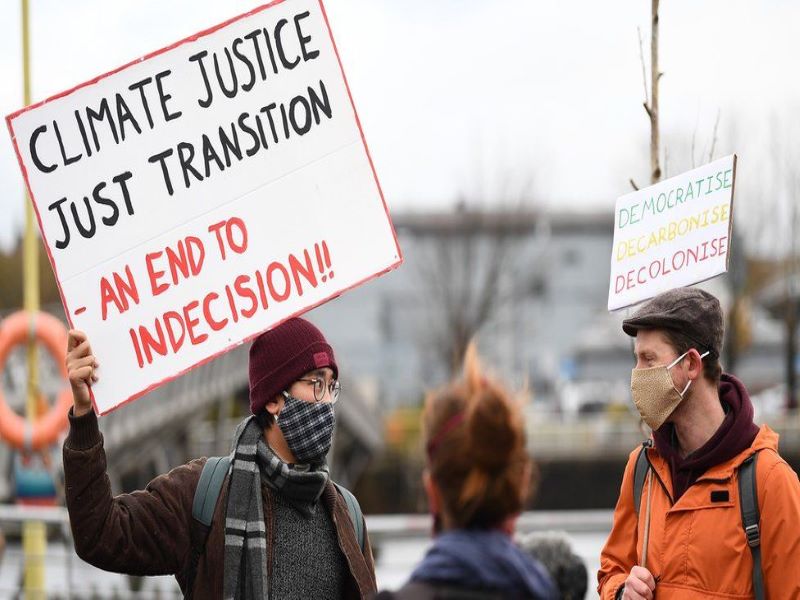What are Scotland’s renewable energy targets?
Scottish ministers want renewable energy generation to account for 50% of energy demand across electricity, heat and transport by 2030.
The government had also set a target of generating the equivalent of 100% of its electricity demand from renewables by 2020. However, it narrowly missed that target, having achieved a total of 97.4% last year.
Industry body Scottish Renewables said output had tripled in the last 10 years, and described the targets as «a tremendous motivator» for the industry.
The country has been moving away from burning fossil fuels, with the last coal-fired power station, Longannet, closing in 2016. The only remaining gas-fired power station is at Peterhead in Aberdeenshire, which its owners plan to rebuild with carbon capture and storage technology attached.
Onshore wind delivers about 70% of capacity, followed by hydro and offshore wind as Scotland’s main sources of renewable power.
Scotland’s largest single source is the Beatrice offshore wind farm. Its 84 turbines – each with three 75m (246ft) blades – went into operation in 2019. The wind farm is is capable of generating enough power for 450,000 homes.
The Seagreen Wind Farm, under construction off Angus, will eventually be even bigger and able to power 1.3m homes.
What about greenhouse gas emissions?
The Scottish government has set a legally-binding target to cut greenhouse gas emissions to net zero by 2045, five years ahead of the date set for the UK as a whole.
Emissions of greenhouse gases – such as carbon dioxide – have already been reduced to about half of what they were 30 years ago.
The latest figures for 2019 showed they had fallen by 51.5% from the baseline, although this remains well below the target of 55%.
A Scottish government-appointed commission was set up to examine how to protect the economy and ensure a «just transition» so oil workers and farmers don’t lose out as the world moves away from fossil fuels.
The commission’s report, which made 24 recommendations, says there needs to be an «orderly, managed transition to net-zero» which creates benefits and opportunities for people across Scotland.
Net zero means any emissions will be balanced out by schemes to offset an equivalent amount of greenhouse gases from the atmosphere – such as planting trees, or using technology to capture carbon and store it.
The Scottish government believes its targets are «the toughest anywhere in the world».
They are certainly among the most ambitious.
However, other countries – such as Sweden – have passed legislation with the same goal. Sweden did so two years before Scotland, and it has also set milestones along the way. But Scotland’s milestone targets are more ambitious and include emissions from aviation and shipping.
They also don’t rely on international credits, which is where countries can pay for emissions to be reduced elsewhere instead of reducing their own.
What about transport?
Transport accounts for about a quarter of Scotland’s greenhouse gas emissions. Some steps have been taken to reduce this, but the overwhelming majority of vehicles on the road are still greenhouse gas-emitting petrol or diesel engines.
The Scottish government has said it wants to have «phased out» the need for new petrol and diesel cars by 2030 – and hopes to reduce the use of cars generally, with the number of kilometres driven to be reduced by 20%.
The number of new electric and hybrid cars registered in the UK rose by nearly 40% in a year and the availability of publicly-available charge points in Scotland is now at 1,800 and increasing.
Low emission zones that will see polluting vehicles banned from entering city and town centres (and receive a penalty notice if they don’t comply) are planned for Aberdeen, Edinburgh and Dundee, with all local authorities now consulting on introducing them.
So far only Glasgow has introduced measures, which only apply to 60% of buses that enter the zone.
The Covid pandemic has had a major impact on travel. While restrictions have been eased in recent months, people are still being told to work from home where possible.
The Scottish government had previously taken steps to discourage commuters from taking their cars to work through the Workplace Parking Levy.
It allows councils to tax businesses on staff parking spaces but, so far, no councils have committed to introducing the levy this year.
While car journeys in July 2021 were 5% lower than before the pandemic, Transport Scotland has estimated that air travel was down by 60% and rail was down by 50%.
However, emissions from international aviation had been continuing to rise in the years before the pandemic.
Heating homes
About 13% of Scotland’s emissions come from housing, with most homes (about 80%) still relying on gas central heating systems.
The target set by ministers is that 50% of all new heating systems being installed should be zero-emissions models by 2025.
Instead of gas, heating systems should use renewable energy, or rely on low-carbon alternatives such as heat pumps.
And 20,000 households have benefite from better insulation and new, more efficient – although still often gas – heating systems, funded by the Scottish government.
Planting trees
Trees are still the most effective way of absorbing CO2 from the atmosphere.
To meet targets, the UK needs a net increase of 32,000 hectares of woodland planted every year for the next 30 years – equating to about 1.5bn trees.
Figures show most of the trees planted in the UK were planted in Scotland – 11,000 of the 13,700 hectares planted in 2019-20.
By 2024, the Scottish government aims to be creating 18,000 hectares of new woodlands per year, with the ultimate goal of having 21% of Scotland’s land covered by forest by 2032 – compared to 19% today.





















